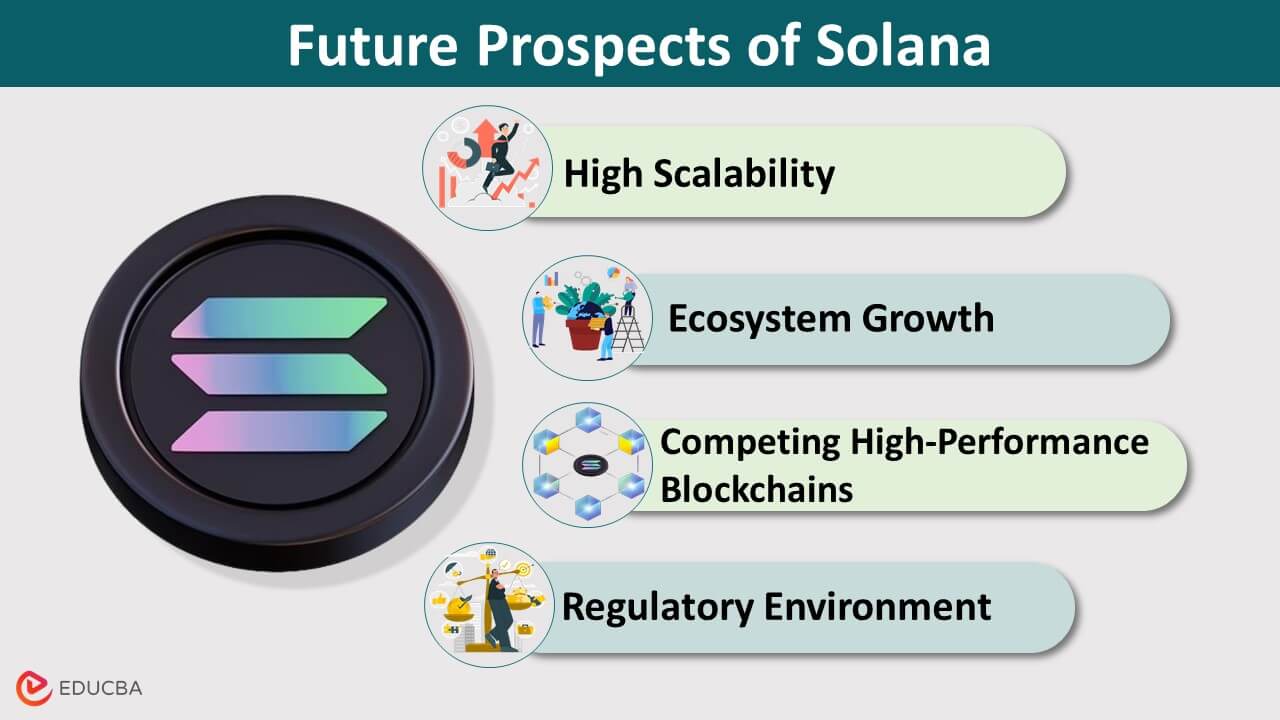What is Solana?
Solana is a blockchain platform renowned for delivering fast and scalable solutions. It primarily serves decentralized applications (DApps) and other crypto projects. Its main aim is to overcome the speed and scalability challenges that traditional networks commonly face.
It has emerged as an important player in the dynamic field of blockchain technology, attracting attention for its unique approach to addressing scalability, speed, and efficiency issues. This article closely examines Solana’s technology, its growing ecosystem, recent accomplishments, challenges faced, and potential impact on the wider blockchain industry. Additionally, we will touch upon the investment landscape with insights from Ai Pro 2024, a platform that links traders with investment education firms to improve their trading strategies and knowledge.
Understanding Solana’s Technology
1. Unique architecture
Solana’s impressive performance is due to its unique architecture. It combines technologies like Proof-of-History (PoH) that timestamps transactions chronologically. This, along with Proof-of-Stake (PoS), creates a consensus mechanism, allowing the network to process transactions quickly.
2. Different from traditional blockchain networks
To appreciate Solana’s innovation fully, it’s essential to compare it with traditional blockchain networks like Bitcoin and Ethereum. While Bitcoin takes about 10 minutes for an average transaction and Ethereum around 13 seconds, Solana’s innovation shines through its remarkable throughput, handling thousands of transactions per second. This clear recognition highlights the importance of Solana’s technology in blockchain.
3. Unmatched scalability and throughput
Solana’s ability to scale horizontally has been a game-changer. Its network can effortlessly expand by adding more nodes and validators, making it highly scalable. This scalability results from Solana’s unique consensus algorithm, enabling it to maintain high throughput while accommodating the growing transaction demand.
The Solana Ecosystem
The Solana ecosystem encompasses various projects and components, contributing to its growth and development. Here are some key aspects of the it’s ecosystem:
1. Consists of numerous DApps and DeFi projects
The Solana ecosystem has become a hub for decentralized applications (DApps) and decentralized finance (DeFi) projects. Notable DeFi platforms such as Serum and Raydium have chosen it because of its rapid transaction processing capabilities and low fees. For developers, it offers a robust environment to build high-performance applications.
2. Contributes to the NFT boom
The Non-Fungible Token (NFT) craze has found a welcoming home on Solana. Prominent NFT marketplaces like Solsea and Metaplex have grown on the network, offering artists and collectors an efficient and cost-effective platform. It is a popular choice among NFT creators and enthusiasts because it offers quick transaction confirmation and low fees.
Milestones
Solana has achieved several milestones. Here are some notable milestones:
1. Overview of key developments and partnerships
It has achieved key milestones through strategic partnerships with notable blockchain projects like Chainlink, Serum, and Mango Markets, strengthening its ecosystem. These collaborations underscore the growing confidence in Solana’s potential, as evidenced by significant investments and funding rounds.
2. The rise of Solana’s native token (SOL)
Solana’s native cryptocurrency, SOL, has experienced remarkable growth. Its price performance and market capitalization have surged, positioning SOL among the top cryptocurrencies by market cap. Furthermore, SOL holders can stake their tokens and participate in governance, giving them a voice in the network’s development.
Challenges
Solana, like any blockchain project, faced a set of challenges:
1. Network stability
While it aims to provide a highly scalable and fast network, ensuring stability under heavy loads and traffic is an ongoing challenge. Network congestion and unexpected traffic spikes can impact the user experience and transaction processing times.
2. Security issues
As with any blockchain platform, security is an important concern. It’s rapid development and adoption may expose it to unforeseen vulnerabilities or attacks. Continuous auditing and security measures are essential to address these challenges.
3. Node synchronization
It relies on a large number of nodes to achieve its high throughput. Maintaining synchronization among these nodes can be challenging, and discrepancies may lead to issues in the consensus mechanism.
4. Competition
It competes with various platforms in the competitive blockchain space, each offering similar or different features. Staying ahead regarding technology, adoption, and community support is an ongoing challenge.
Future Prospects and Industry Impact
Following are some of the potential future prospects and industry impacts.
1. High scalability
It is known for its high scalability and throughput, providing a platform for decentralized applications (DApps) and projects with low transaction costs. If it continues to maintain and improve upon these features, it could attract more developers and projects seeking efficient blockchain solutions.
2. Ecosystem growth
The growth of its ecosystem is crucial for its long-term success. This includes developing various applications, tools, and services around the Solana blockchain. A thriving ecosystem can attract more users, developers, and investors.
3. Competing high-performance blockchains
It is not alone in the fast blockchain race. Other blockchains like Binance Smart Chain, Avalanche, and Polkadot are also competing. This competition is good because it makes each blockchain work harder to be the best, bringing more cool features and making the whole blockchain world stronger.
4. Regulatory environment
The regulatory environment can largely affect the future of cryptocurrency and blockchain technology. A clear and supportive regulatory framework could foster the adoption of Solana by businesses and institutions, while uncertainty or restrictive regulations may pose challenges. Regulations can greatly affect the future of cryptocurrency and blockchain technology.
Final Thoughts
In conclusion, it looks promising for the future of blockchain. Its unique approach to scalability sets it apart, offering fast transactions with low fees. The growing community and decentralized finance and applications support indicate a strong ecosystem. While challenges may arise, it’s commitment to performance and decentralization positions it well for continued success in the evolving blockchain space. Overall, it appears to have a bright future ahead.
Recommended Articles
If you found this article useful, please check out the following recommendations:

